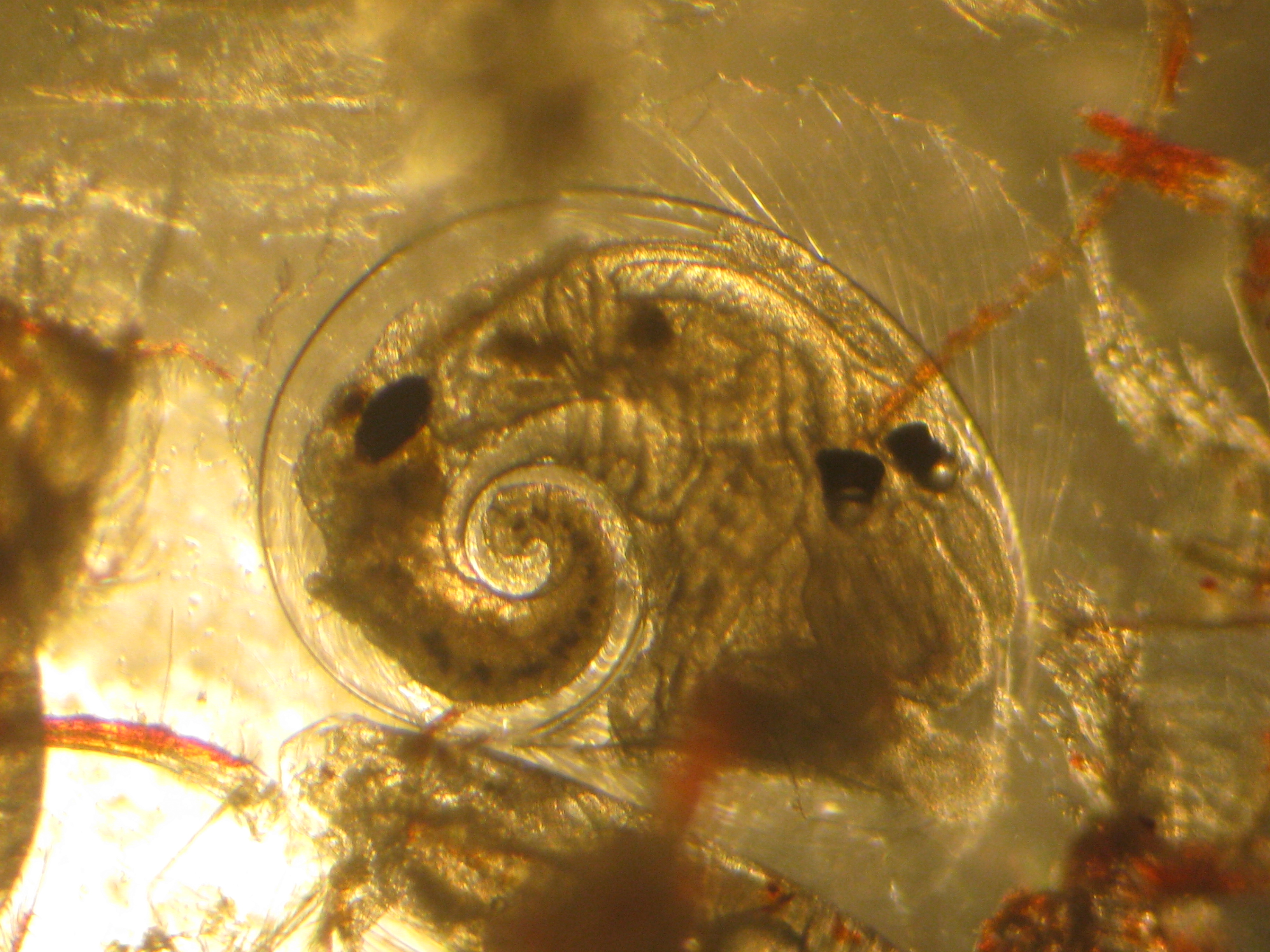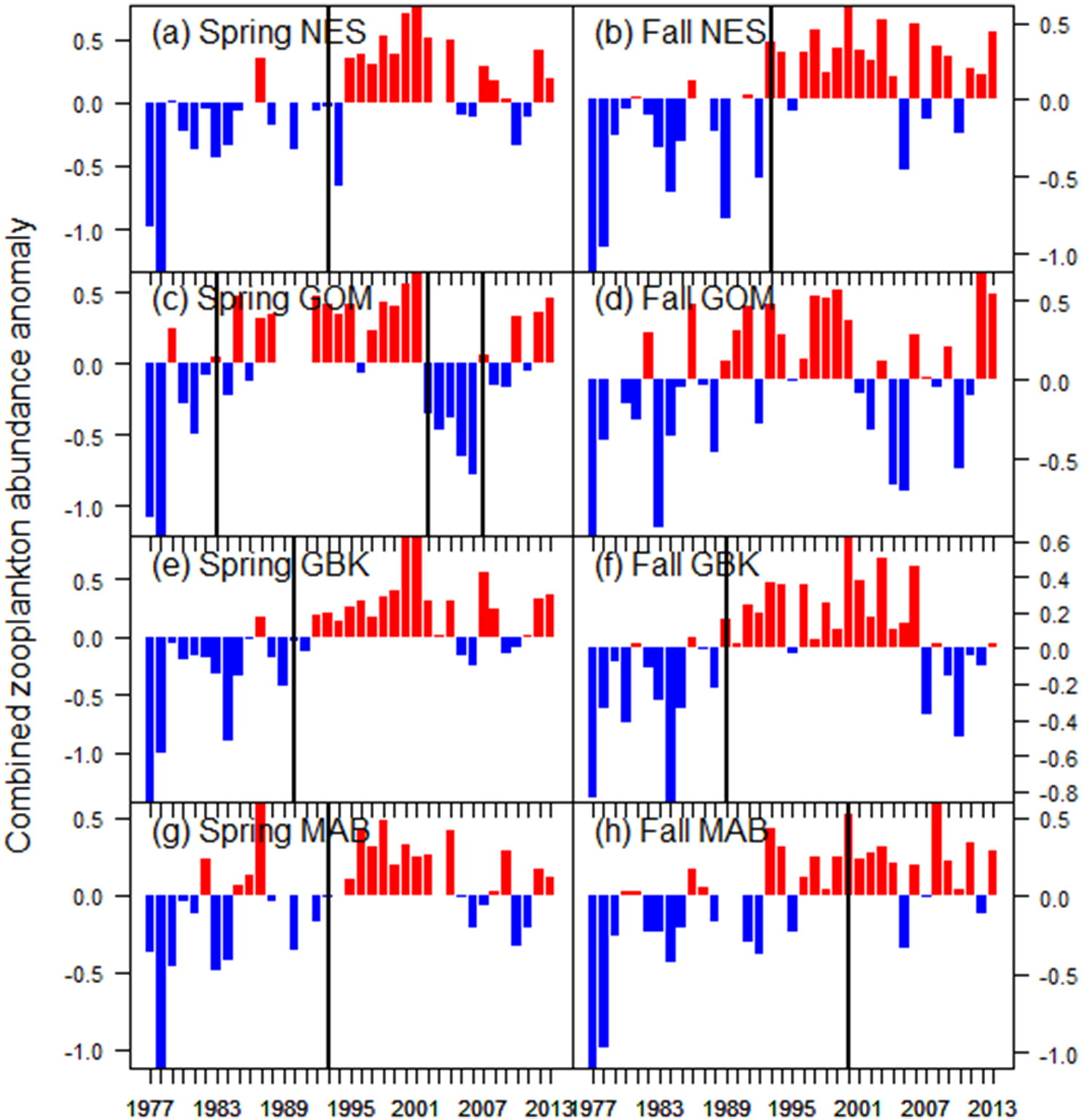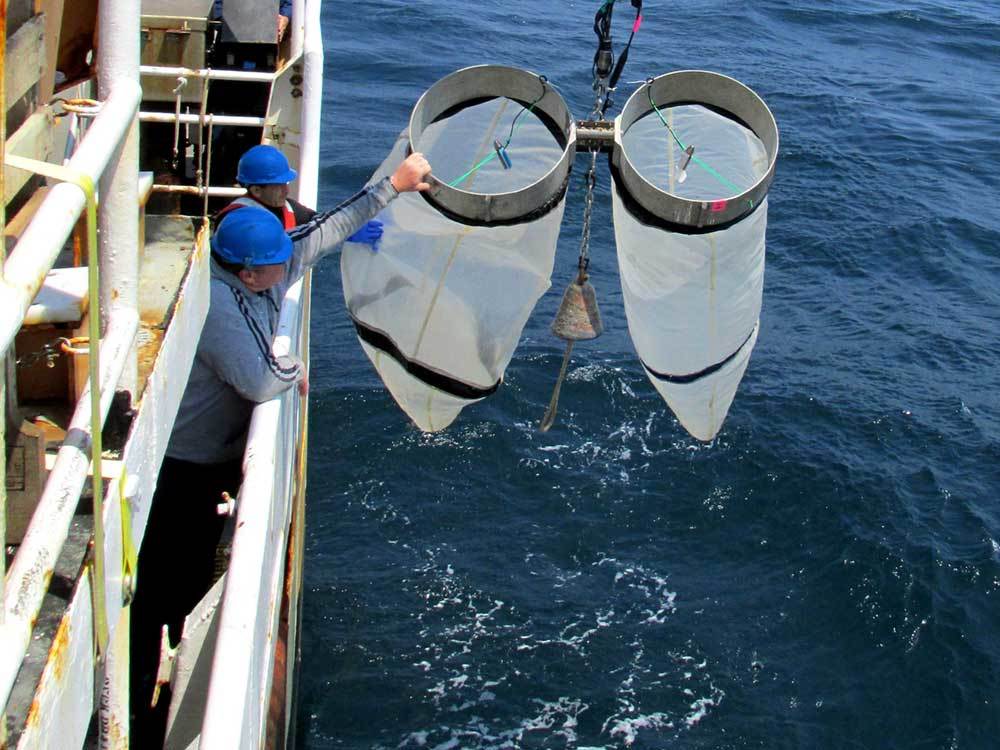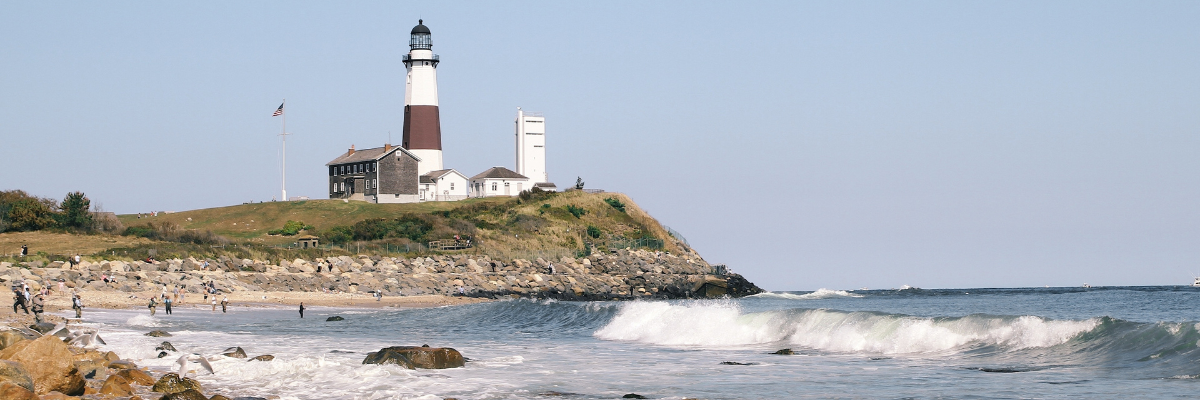Overview
Zooplankton are heterotrophic animals (prey on other plants and animals) found in the plankton, and are critical components to the functioning of marine ecosystems, serving as a link between lower trophic level production and upper trophic level consumption (Johnson et al. 2011). As energetic intermediaries, the effects of climate change on zooplankton community structure and abundance is strongly linked to the effect of a changing climate on higher trophic levels (Morse et al. 2017). Zooplankton community structure, and in particular species richness, has also been correlated with fisheries productivity in the California Current Large Marine Ecosystem, and zooplankton species abundance linked to recruitment of cod and haddock in the Northeast Large Marine Ecosystem (NE-LME) (Peterson 2009, Friedland et al. 2013). In the NE-LME, zooplankton support a wide range of ecologically and economically important species, including the critically endangered North Atlantic right whale, herring, mackerel, and sand lance (Johnson et al. 2011).
- Gulf of Maine
In Gulf of Maine, the abundance of the large bodied copepod Calanus finmarchicus was at or below average between 2009-2014, and above average in 2015 (NEFSC 2018a). Rapidly warming waters in the Gulf of Maine could threaten the timing of entrance into and exit out of the Calanus diapause cycle, a period of time when adult copepods move to deeper colder water and stop feeding and developing. After diapause, adults emerge and migrate to surface waters to feed and reproduce. A shifted diapause cycle could result in a temporal mismatch between the presence of Calanus and larval fish that rely on the copepod as a food source, as well as those fishes that feed on Calanus seasonally, like herring and mackerel (Johnson et al. 2011). Pseudocalanus spp., another important species of copepod in the region, had below average abundance for most of the past decade but was above average in 2015.
- Georges Bank
Calanus abundance has been below average on Georges Bank for nearly all of the past decade, and Pseudocalanus spp. abundance has seen a significant downward trend since the late 1970s when sampling began (NEFSC 2018). High densities of Calanus and Pseudocalanus spp. are associated with the feeding behavior of baleen whales, which tend to congregate on the Bank during the herring spawning season to feed (Wang et al. 2016, Mayo et al. 1990).
- Mid-Atlantic Bight
In the Mid-Atlantic, the important omnivorous grazer Centropages typicus has shown a significant long-term negative abundance trend since the mid-1980s. The relative abundance of small to large bodied copepods in the Mid-Atlantic is correlated with primary production in the region. Large bodied copepods, such as Calanus, have been shown to be more prevalent when primary productivity is below average.
Ecological Interactions
Zooplankton provide a critical link between phytoplankton at the base of the food web, and higher trophic organisms such as fish, mammals, and birds. On a global scale, the amount of primary productivity channeled through zooplankton is more highly correlated with fishery yields than the amount of primary production itself (Friedland et al. 2012). Changes in the species composition and biomass of the zooplankton community have a great potential to affect recruitment success and fisheries productivity, and climate change may be the most important pathway for these changes to manifest. Because of their sensitivity to environmental change and their integrative role as a link between trophic levels, zooplankton are often used as ecosystem indicators of both trophic structure and physical ocean conditions (Peterson 2009). Changes in the spatial distribution of relative abundance have occurred for many zooplankton taxa, including many copepods that are important food sources for larval fish, planktivores, and baleen whales. There is strong evidence for decadal-scale regime shifts in zooplankton community organization at the base of the food web (Morse et al. 2017).

Environmental Drivers
At decadal scales, shifting distributions of zooplankton on the NE shelf have been associated with warming waters and changes in the distribution of fish taxa. On shorter timescales, daily vertical migrations of the plankton and transport along major currents in the GOM and around GBK are important environmental controls on the distribution of zooplankton. Temperature and salinity fronts act to concentrate food sources and contribute to the patchy distributions of zooplankton. Temperature and food availability also regulate the timing of diapause in Calanus, and contribute to seasonal differences in distribution due to life history stages.

Human Activities
Climate change is affecting the abundance and distribution of plankton on the NE shelf. Warming waters result in shifting distributions and in changes in relative abundance (Johnson et al. 2011). Additionally, regime shifts in zooplankton community structure were associated with changes in water temperature, stratification, and the Atlantic multidecadal oscillation (Morse et al. 2017).

